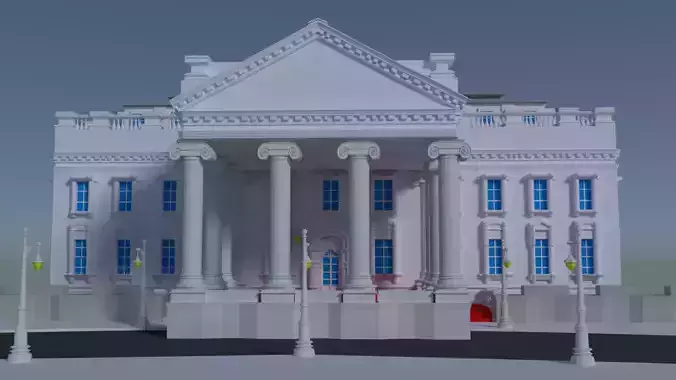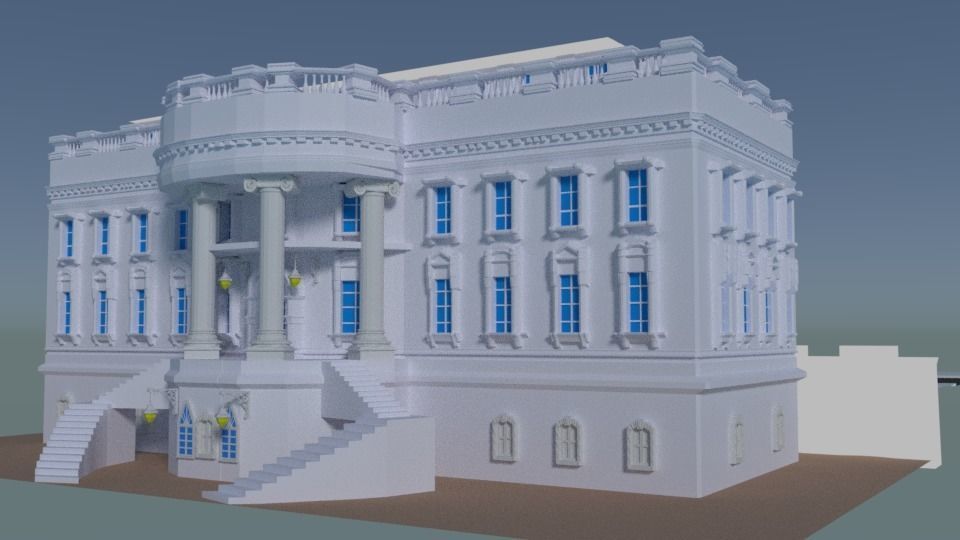
WHITE HOUSE 3D MODEL Low-poly 3D model
Evolution of the White HouseEarly use, the 1814 fire, and rebuildingOn Saturday, November 1, 1800, John Adams became the first president to take residence in the building.[24] The next day he wrote his wife Abigail: I pray Heaven to bestow the best of blessings on this House, and all that shall hereafter inhabit it. May none but honest and wise men ever rule under this roof.[36] President Franklin D. Roosevelt had Adams's blessing carved into the mantel in the State Dining Room.[36]
Adams lived in the house only briefly before Thomas Jefferson moved into the pleasant country residence[37] in 1801. Despite his complaints that the house was too big (big enough for two emperors, one pope, and the grand lama in the bargain),[38] Jefferson considered how the White House might be added to. With Benjamin Henry Latrobe, he helped lay out the design for the East and West Colonnades, small wings that help conceal the domestic operations of laundry, a stable and storage.[24] Today, Jefferson's colonnades link the residence with the East and West Wings.[24]
In 1814, during the War of 1812, the White House was set ablaze by British troops[39] during the Burning of Washington, in retaliation for burning of Port Dover and other towns in Upper Canada; much of Washington was affected by these fires as well. Only the exterior walls remained, and they had to be torn down and mostly reconstructed because of weakening from the fire and subsequent exposure to the elements, except for portions of the south wall. Of the numerous objects taken from the White House when it was ransacked by British troops, only two have been recovered. Employees and slaves rescued a painting of George Washington,[39] and in 1939, a Canadian man returned a jewelry box to President Franklin Roosevelt, claiming that his grandfather had taken it from Washington. Some observers allege that most of these spoils were lost when a convoy of British ships led by HMS Fantome sank en route to Halifax off Prospect during a storm on the night of November 24, 1814,[40][41] even though Fantome had no involvement in that action.[42]
After the fire, President James Madison resided in the Octagon House from 1814 to 1815, and then the Seven Buildings from 1815 to the end of his term.[43] Meanwhile, both architect Benjamin Henry Latrobe and Hoban contributed to the design and oversight of the reconstruction, which lasted from 1815 until 1817. The south portico was constructed in 1824 during the James Monroe administration; the north portico was built six years later.[24] Though Latrobe proposed similar porticos before the fire in 1814, both porticos were built as designed by Hoban.[44] An elliptical portico at Château de Rastignac in La Bachellerie, France with nearly identical curved stairs is speculated as the source of inspiration due to its similarity with the South Portico,[45] although this matter is one of great debate.[46] Italian artisans, brought to Washington to help in constructing the U.S. Capitol, carved the decorative stonework on both porticos. Contrary to speculation, the North Portico was not modeled on a similar portico on another Dublin building, the Viceregal









